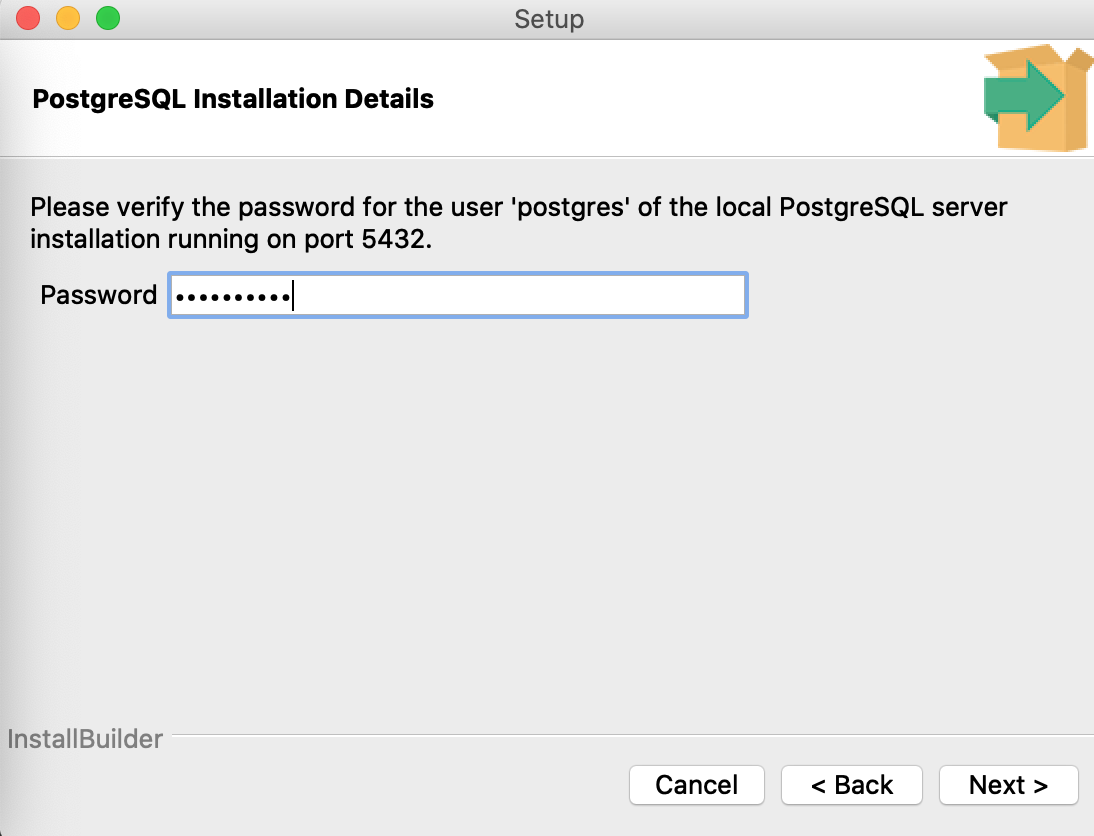

- POSTGRES APP DEFAULT PASSWORD HOW TO
- POSTGRES APP DEFAULT PASSWORD INSTALL
- POSTGRES APP DEFAULT PASSWORD UPDATE
- POSTGRES APP DEFAULT PASSWORD UPGRADE
- POSTGRES APP DEFAULT PASSWORD PASSWORD
You'll use them later to connect your app to the database.
POSTGRES APP DEFAULT PASSWORD PASSWORD
They show the database user that's created for you, with the username root and password Sampledb1. When the command finishes, find the output lines that being with Ran Database Query. You can do all the steps separately with other az postgres commands and psql, but az postgres up does all of them in one step for you.

Replace with a unique name (the server endpoint is For and, specify credentials to create an administrator user for this Postgres server.
POSTGRES APP DEFAULT PASSWORD INSTALL
Install the db-up extension with the following command: az extension add -name db-upĬreate the Postgres database in Azure with the az postgres up command, as shown in the following example. When the command finishes, a JSON output shows you the resource group properties. You generally create your resource group and the resources in a region near you. az group create -name myResourceGroup -location "West Europe" To see all supported locations for App Service on Linux in Basic tier, run the az appservice list-locations -sku B1 -linux-workers-enabled command. The following example creates a resource group named myResourceGroup in the West Europe location. In the Cloud Shell, create a resource group with the az group create command. For example, you can choose to delete the entire resource group in one simple step later. Create a resource groupĪ resource group is a logical container into which Azure resources, such as web apps, databases, and storage accounts, are deployed and managed. Later, you configure the Ruby on Rails application to connect to this database. In this step, you create a Postgres database in Azure Database for PostgreSQL. To stop the Rails server, type Ctrl + C in the terminal. To see which tables are created in the migrations, look in the db/migrate directory in the Git repository. Run the Rails migrations to create the tables the application needs. For more information, see Change deployment branch.
POSTGRES APP DEFAULT PASSWORD HOW TO
However, since many repositories are changing their default branch to main, this tutorial also shows you how to deploy a repository from main. The branch name change isn't required by App Service. In the terminal window, cd to a working directory.Ĭlone the sample repository and change to the repository root. In this step, you get a Ruby on Rails sample application, configure its database connection, and run it locally. If not, make sure that your local Postgres database is started by following the steps at Downloads - PostgreSQL Core Distribution.Ĭreate a Postgres user that can create databases by running the following command, using your signed-in Linux username. If your connection is successful, your Postgres database is running. Open the terminal window and run psql to connect to your local Postgres server. In this step, you create a database in your local Postgres server for your use in this tutorial.
POSTGRES APP DEFAULT PASSWORD UPGRADE
To upgrade to the latest version, run az upgrade. Run az version to find the version and dependent libraries that are installed. For more information about extensions, see Use extensions with the Azure CLI. When you're prompted, install the Azure CLI extension on first use. For other sign-in options, see Sign in with the Azure CLI. To finish the authentication process, follow the steps displayed in your terminal.

If you're using a local installation, sign in to the Azure CLI by using the az login command. For more information, see How to run the Azure CLI in a Docker container. If you're running on Windows or macOS, consider running Azure CLI in a Docker container. If you prefer to run CLI reference commands locally, install the Azure CLI. For more information, see Azure Cloud Shell Quickstart - Bash. Use the Bash environment in Azure Cloud Shell. If you don't have an Azure subscription, create an Azure free account before you begin.
POSTGRES APP DEFAULT PASSWORD UPDATE


 0 kommentar(er)
0 kommentar(er)
